Ristorante Cracco is a glorious, gilded dream.
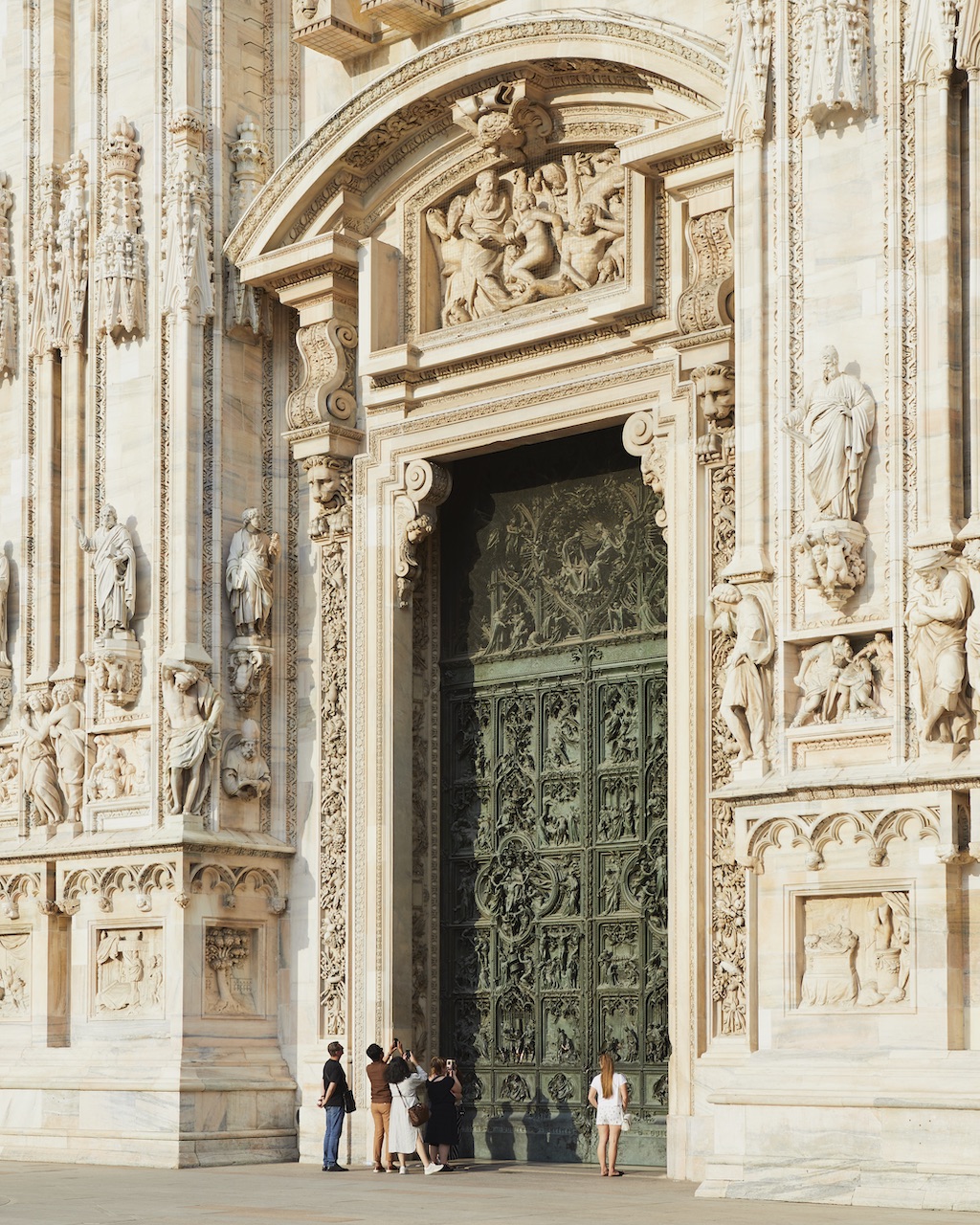
With its sumptuous Neoclassical décor, elegant ambience and sprawling four-storey layout, it feels more like the palatial home of a visconte and less a modern restaurant in the heart of a bustling metropolis. The regal setting is worlds apart from the 21st-century scenes playing out elsewhere on the streets of Milan: the incessant crowds clamouring for selfies in the Piazza del Duomo mere metres away, for instance.
“In Milan, there are tens of thousands of restaurants, but none with really grand, historic settings,” declares celebrity chef Carlo Cracco, who is also a member of Singapore Airlines’ International Culinary Panel. This observation was the inspiration behind his namesake flagship, which reopened last year to great fanfare.
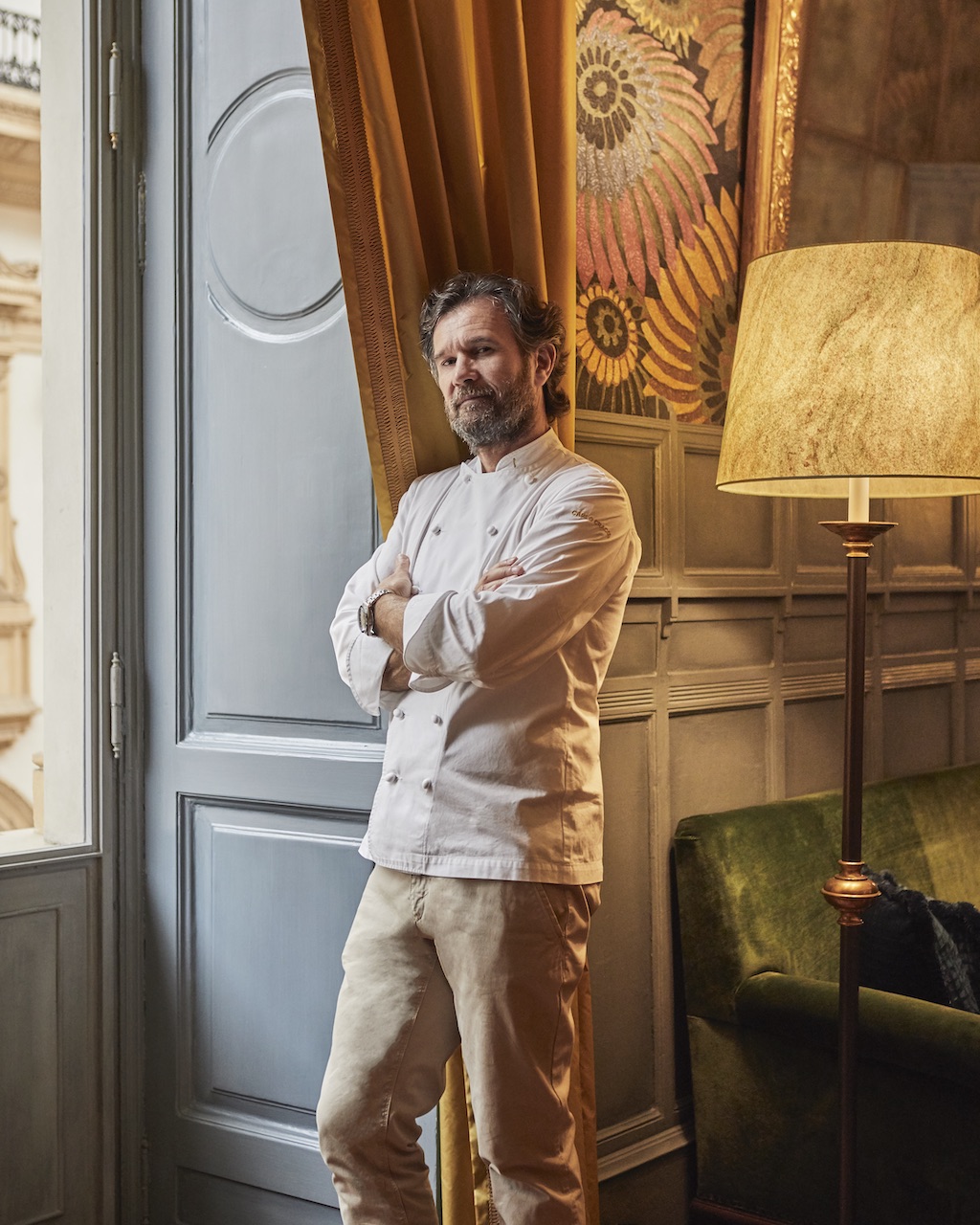
Previously located on Via Victor Hugo in the city centre, the restaurant upped sticks in February 2018 to the nearby Galleria Vittorio Emanuele II, a soaring 1860s glass-vaulted arcade that’s home to big-name boutiques such as Louis Vuitton and Prada. But until Ristorante Cracco’s arrival, its culinary options weren’t quite as impressive: think overpriced cafés heaving with tourists and – somewhat incongruously – a Burger King.
This is perhaps symptomatic of the city’s culinary landscape as a whole. While Milan is known as a fashion and design powerhouse – its glittering Quadrilatero d’Oro district is lined with glossy storefronts showcasing opulent jewellery and haute couture – its food scene hasn’t always been so in vogue. Granted, as with any major city worth its salt, it lays claim to a smattering of Michelin-starred establishments, such as Seta and Enrico Bartolini al Mudec. But while there’s no shortage of venues dishing up top-notch fare, décor is often placed on the back burner. “Most of the places popping up in the city all kind of look alike,” Milan-based food and travel writer Sara Porro admits.
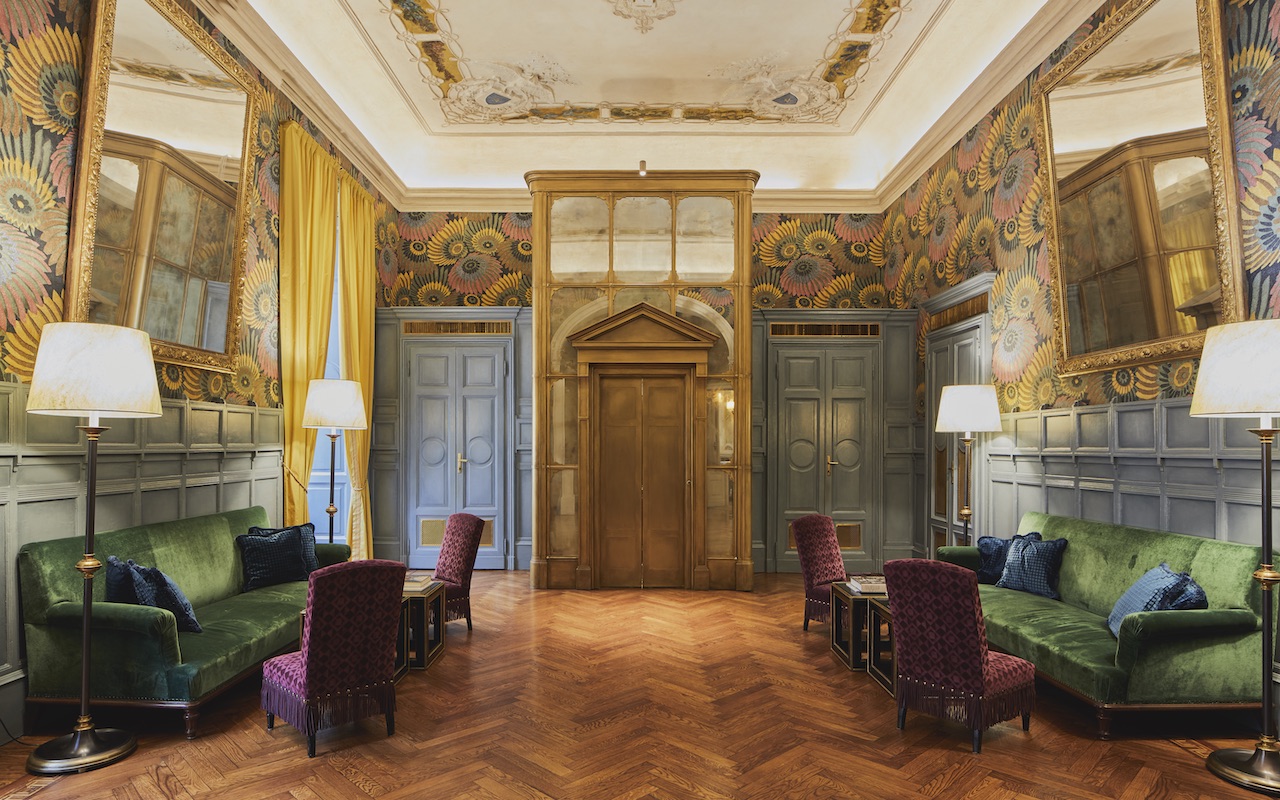
That is, until now. In recent years, a few imaginative restaurants have been elevating the dining experience with more design-driven interiors. “The Expo 2015 (a universal exposition) was a watershed event for Milan. The city found itself attracting media and public attention, and this prompted a phase of expansion, with restaurants at the forefront,” Porro explains. “Also, the role of social media should not be downplayed. People are taking more pictures of the restaurants they go to and the food they eat, so design is definitely becoming more important.”
For Ristorante Cracco, it’s all about old-world glamour. “We wanted to take the spirit of the Galleria outside and bring it into the restaurant,” Cracco says earnestly. To that end, the soft-spoken 53-year-old enlisted design outfit Studio Peregalli to overhaul the 1,200m2 space, which formerly housed drab municipal offices and a Mercedes showroom.
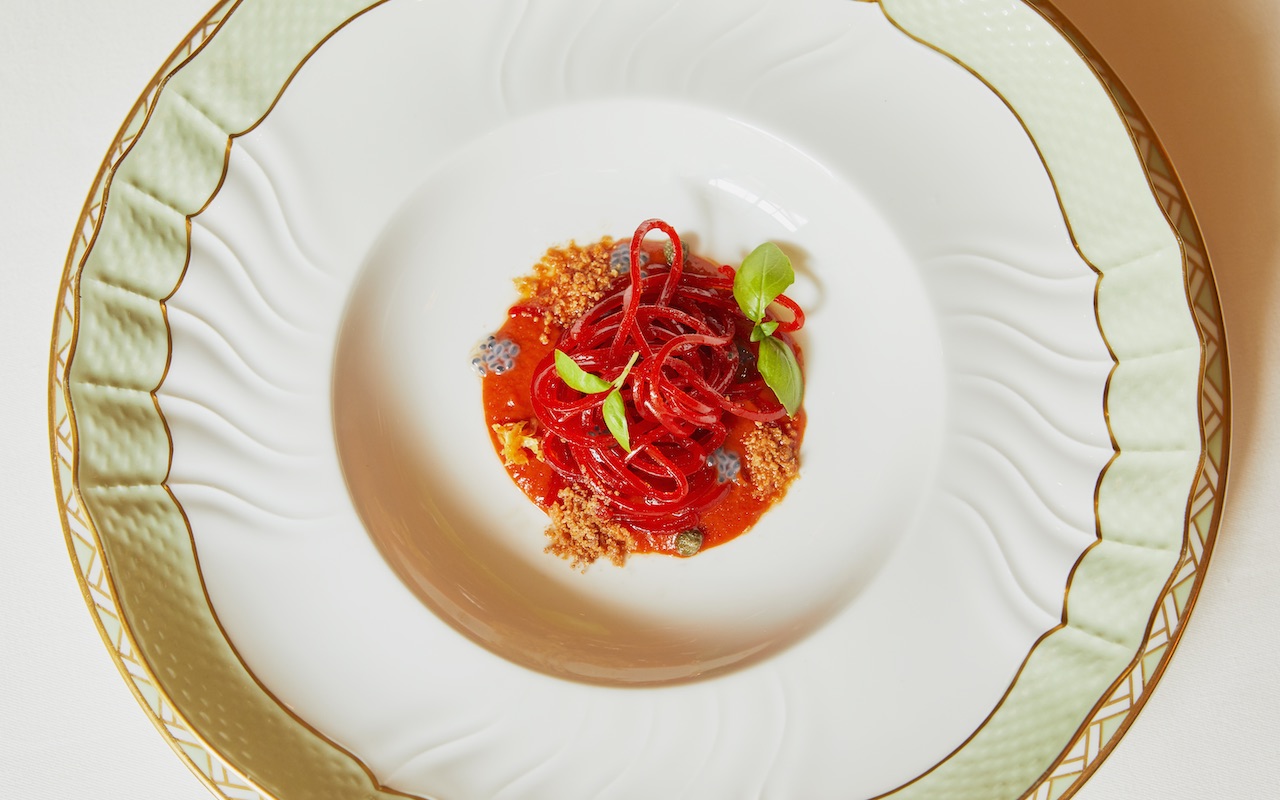
“Our starting point was the Galleria and its architectural vocabulary. We wanted the restaurant to be perfectly integrated with its surroundings,” says Roberto Peregalli, who runs the Milan-based firm with Laura Sartori Rimini. The pair took inspiration from the Galleria’s Neoclassical aesthetic: ornate pilasters and bas-reliefs, hand-painted stucco walls, intricate mosaic floors and artfully distressed mirrors were all custom- made for the restaurant. It’s a highly evocative setting – one that harks back to the building’s 19th-century glory days as the “parlour” of the city, where well-heeled Milanese would sip tea amid the splendid surrounds. “We aimed at restoring the original role of the Galleria as an exciting meeting place,” explains Sartori Rimini.
Ristorante Cracco comprises a café spilling out onto the plaza, a private event space and a cellar housing over 10,000 bottles of wine, but it’s in the restaurant on the second floor where the magic really happens. Here, just about every dish is a revelation: the Russian salad is not a bed of leaves but rather a sculptural disc of diced vegetables lacquered with a caramel glaze. Then there’s the show-stopping tagliatelle with artichoke and black truffle, where the pasta is made entirely from egg yolk. Cracco creates the translucent orange ribbons by marinating the yolk in sugar and salt for seven hours – a technique that gives it enough texture to be rolled into sheets. To him, these dishes are design marvels in their own right: “It’s all about colours and contrasts,” he says, a smile lighting up his dignified demeanour.
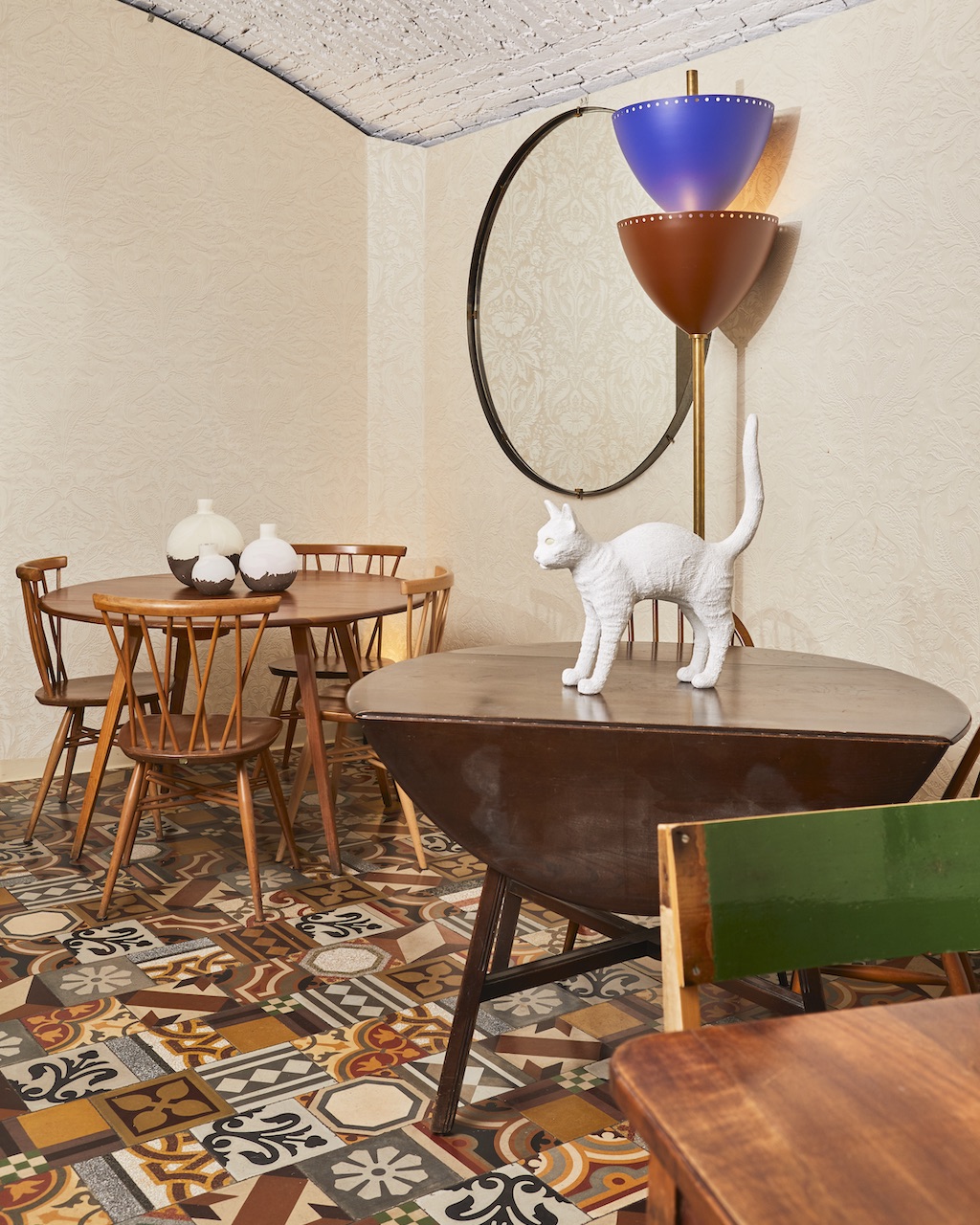
A 20-minute stroll west, Aimo e Nadia bistRo also marries food and décor to great effect. “Our restaurant was born from the happy encounter between Italian gastronomy and design,” says chef Alessandro Negrini, who helms the kitchen alongside Fabio Pisani. Last year, the duo collaborated with Milanese design doyenne Rossana Orlandi to open the bistro – an offshoot of their celebrated restaurant Il Luogo di Aimo e Nadia, which currently has two Michelin stars to its name. The new venue is located in the elegant Magenta district, right next door to Orlandi’s eponymous furniture gallery.
True to Orlandi’s flamboyant aesthetic – she’s often seen in bright, bohemian ensembles, and is rarely spotted without her trademark oversized sunglasses – Aimo e Nadia bistRo is an exercise in maximalism. “I wanted to open an eclectic place where different styles could come together in a dialogue, creating an atmosphere similar to that of my gallery,” the influential design curator explains.
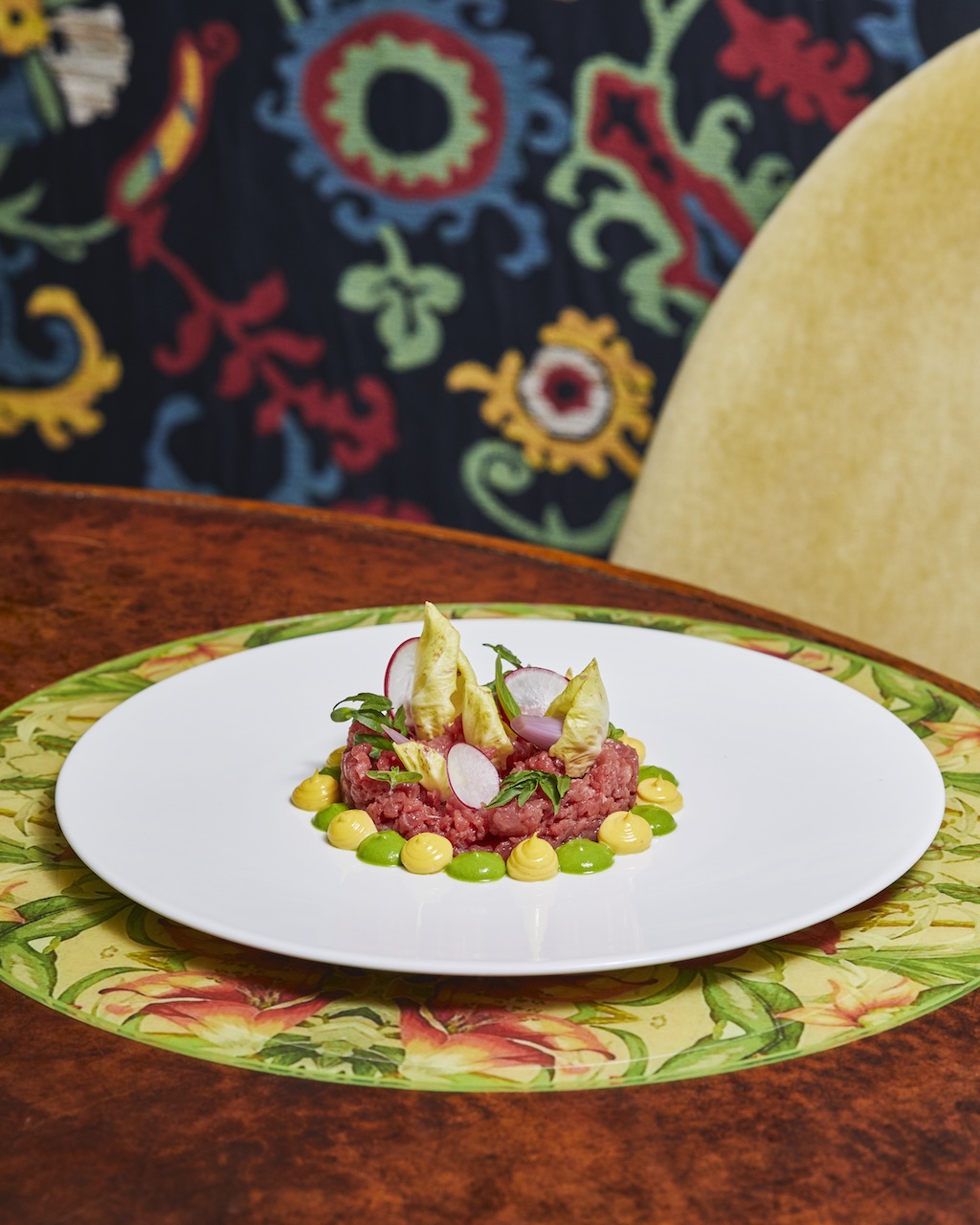
Upon entering Aimo e Nadia bistRo, guests are greeted by a riot of colour and texture, with every corner of the room competing for attention. Emerald and cream walls are embossed with damask motifs and juxtaposed against terrazzo floors. The equally elaborate brocade banquettes, cushions and tapestries come courtesy of Italian fashion house Etro. The rest of the space is decorated with pieces from the gallery, including embellished mirrors by Emanuela Crotti and gold-framed velvet chairs by Nika Zupanc. The scene-stealer, however, is an enormous brass installation by London-based interior design firm McCollin Bryan, festooned with oval resin discs that resemble polished jewels.
The menu is no less imaginative, as one would expect from chefs Negrini and Pisani; after all, Il Luogo di Aimo e Nadia is considered one of the best restaurants in Milan. Dishes include a beef tartare adorned with herbs and slivers of radish, as well as a perfectly cooked egg crowned with paper-thin strips of zucchini – all plated with artistic flair. According to the duo, food and décor should be complementary – and it’s an ethos they see informing a growing number of restaurants in the city. “Milan now has many sophisticated dining destinations, where contemporary cuisine and design meet to offer unique experiences,” Pisani says.
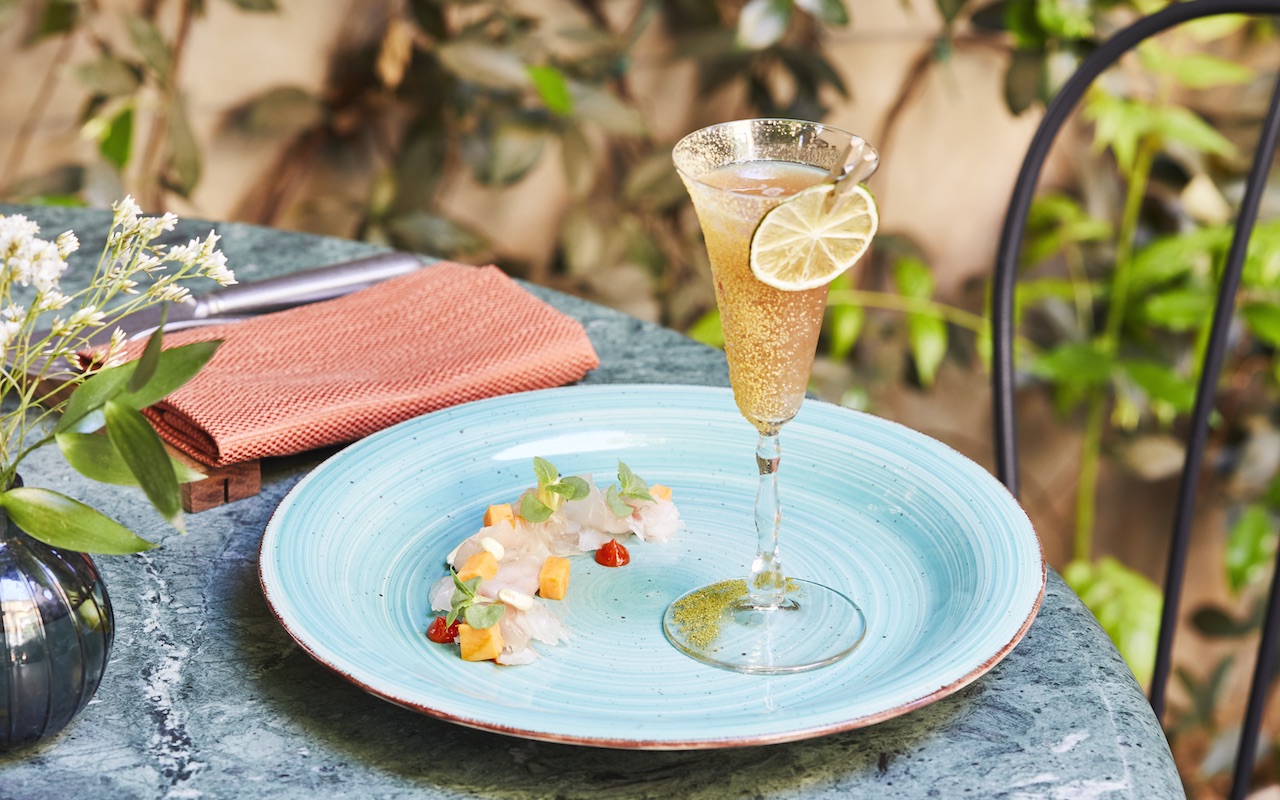
Among these is GinO12/Sixième, whose stripped-back aesthetic is a stark contrast from the visual excess of Aimo e Nadia bistRo. Set in a former 16th-century monastery on a quiet side street close to the Basilica of Sant’Eustorgio, it’s part of lifestyle hub Six, which also comprises a furniture gallery and a soon-to open hotel. Tucked away behind large black wooden doors, the complex wraps around a sun-dappled courtyard strewn with tropical plants. Inside, light streams through arched windows, illuminating the moody interiors: exposed brick walls painted slate grey and furniture from the likes of Isamu Noguchi and Gabriella Crespi. Its cloistered atmosphere makes it feel like a secret garden amid the city’s colourful chaos.
“In Italy, the food rules… However, it’s increasingly important to create a setting that tells its own story ”
“Our aim was to create a warm and intimate space, which explains the use of dark colours and natural materials,” says Fanny Bauer Grung, one-half of Quincoces-Dragò & Partners, the architecture firm behind Six. The elegant Norwegian, who was raised in Rome, has run the practice with her husband David Lopez Quincoces since 2009. During the renovation process, layers of plaster were stripped down to reveal the monastery’s original brickwork, while pebbled flooring and greenery were added to the previously abandoned courtyard. “In Italy, the food rules over everything else. However, it’s increasingly important to create a setting that tells its own story alongside that of the food,” Bauer Grung explains.
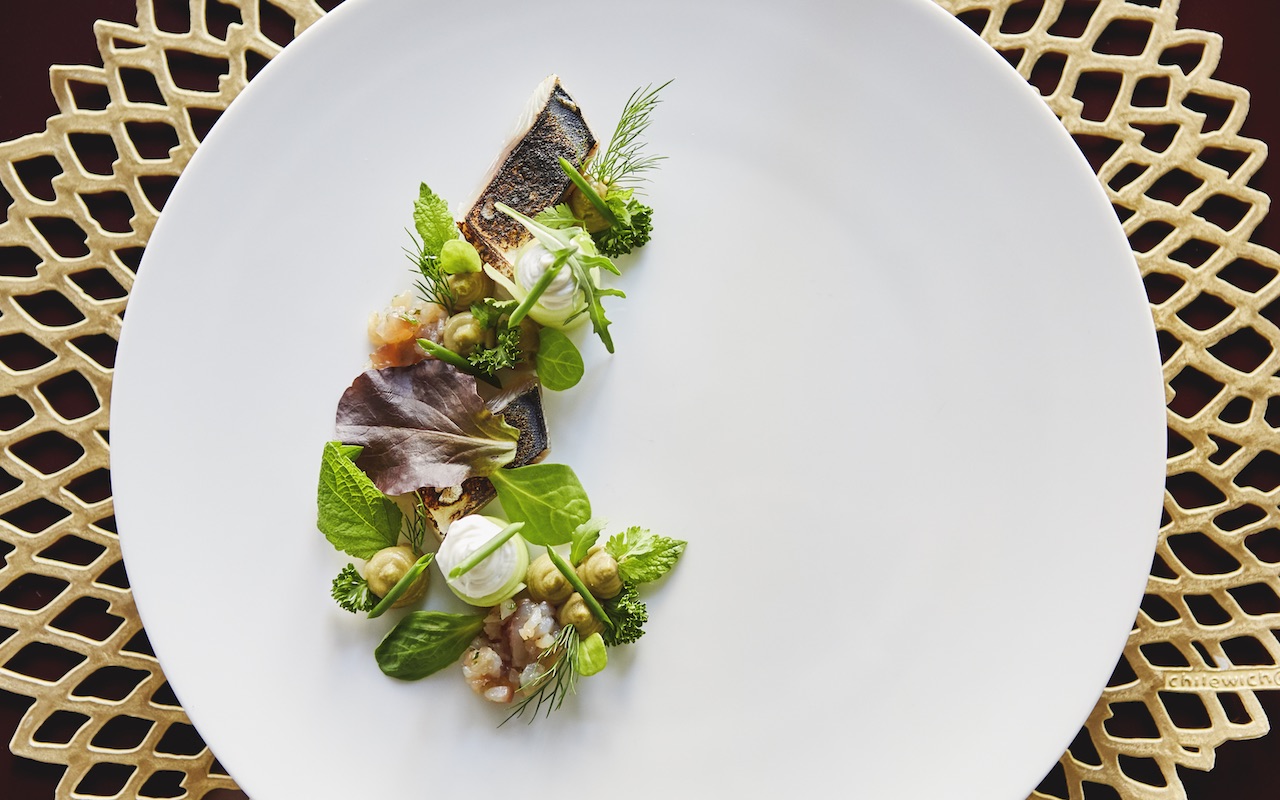
The food is curated by the team behind acclaimed local gin bar GinO12, which came on board in March this year. Described as “Foodology”, the menu takes the art of cocktail pairing to a whole new level. “We don’t just recommend drinks to go with your meal. Instead, we remove a few key ingredients from each dish, and put them into the accompanying cocktail. It’s a mutual completion of sorts,” Samuele Cancelli, the bistro’s maître d’, explains. “It’s the first time in Italy that anyone has done something like this.”
It sounds implausible, but it works. Take the ceviche, for instance: While the thin slices of seabass hold their own without the usual citrus dressing, they’re enhanced by their liquid counterpart – a piquant dry gin with chilli-infused liquor, lime, sweet red onion syrup and celery. Similarly, the cacio e pepe, a pasta with cheese and pepper, is served without the latter ingredient, which is instead used to spice up the complementary cocktail – a heady combination of gin and black-pepper-infused vermouth.
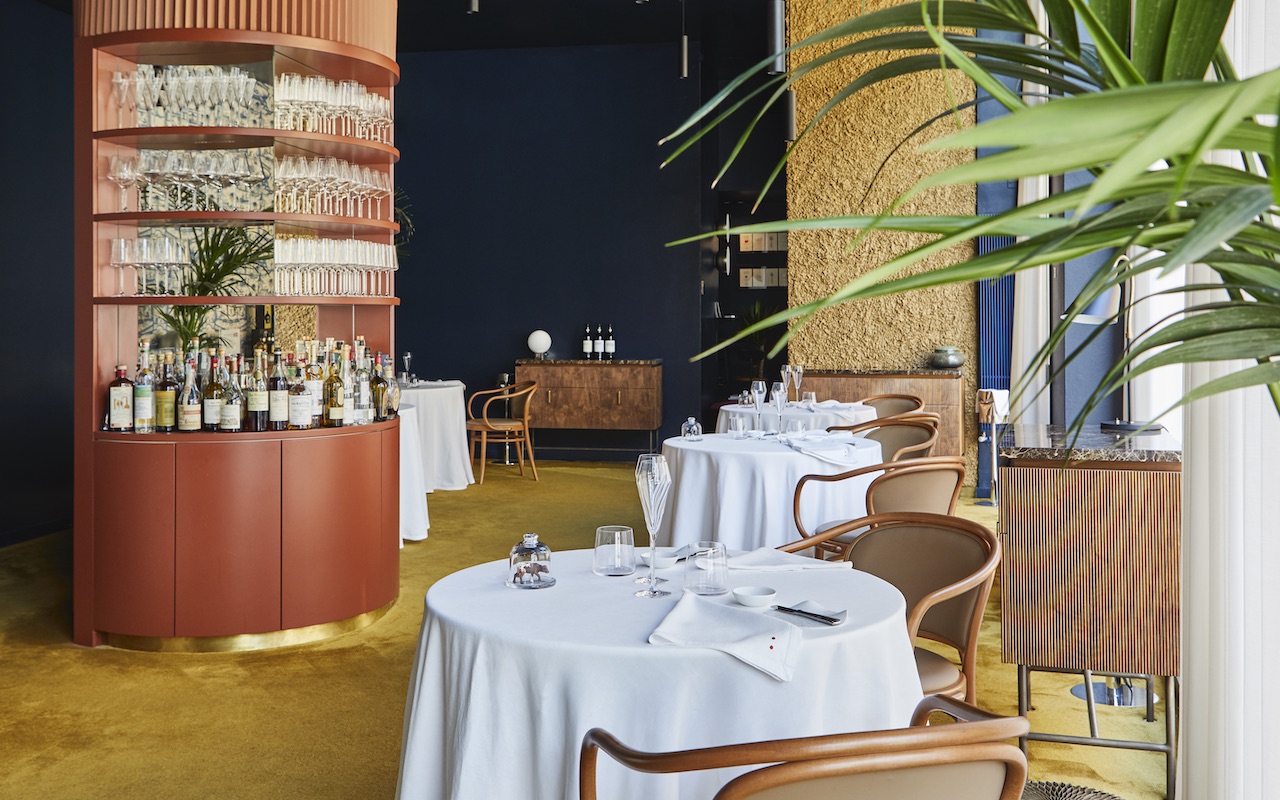
A 10-minute walk through the bohemian Ticinese neighbourhood takes you to bu:r, helmed by chef Eugenio Boer. Born in Liguria, a region of northwestern Italy, to an Italian mother and a Dutch father, the 41-year-old cut his teeth in top-notch kitchens across Europe, including Ristorante Arnolfo near Siena, before heading up the now-defunct Michelin-starred Essenza in Milan. In 2018, he launched bu:r to showcase his take on haute cuisine.
The restaurant could pass off as a chic, well-designed apartment – and that’s exactly the vibe Boer is hoping to channel. “I want people to come here and say, ‘This is Eugenio’s home’,” Boer says, smiling behind his wiry beard. For starters, the façade has no signage whatsoever – just an unmarked red door. Inside, you’ll find a single room with six tables, which creates a sense of intimacy. Prussian-blue walls are juxtaposed against carpeted floors a shade of saffron, while furniture is hewn from materials like walnut, brass and marble. The back of the room is adorned with patterned wallpaper reminiscent of Delft pottery – a nod to Boer’s childhood in Holland.
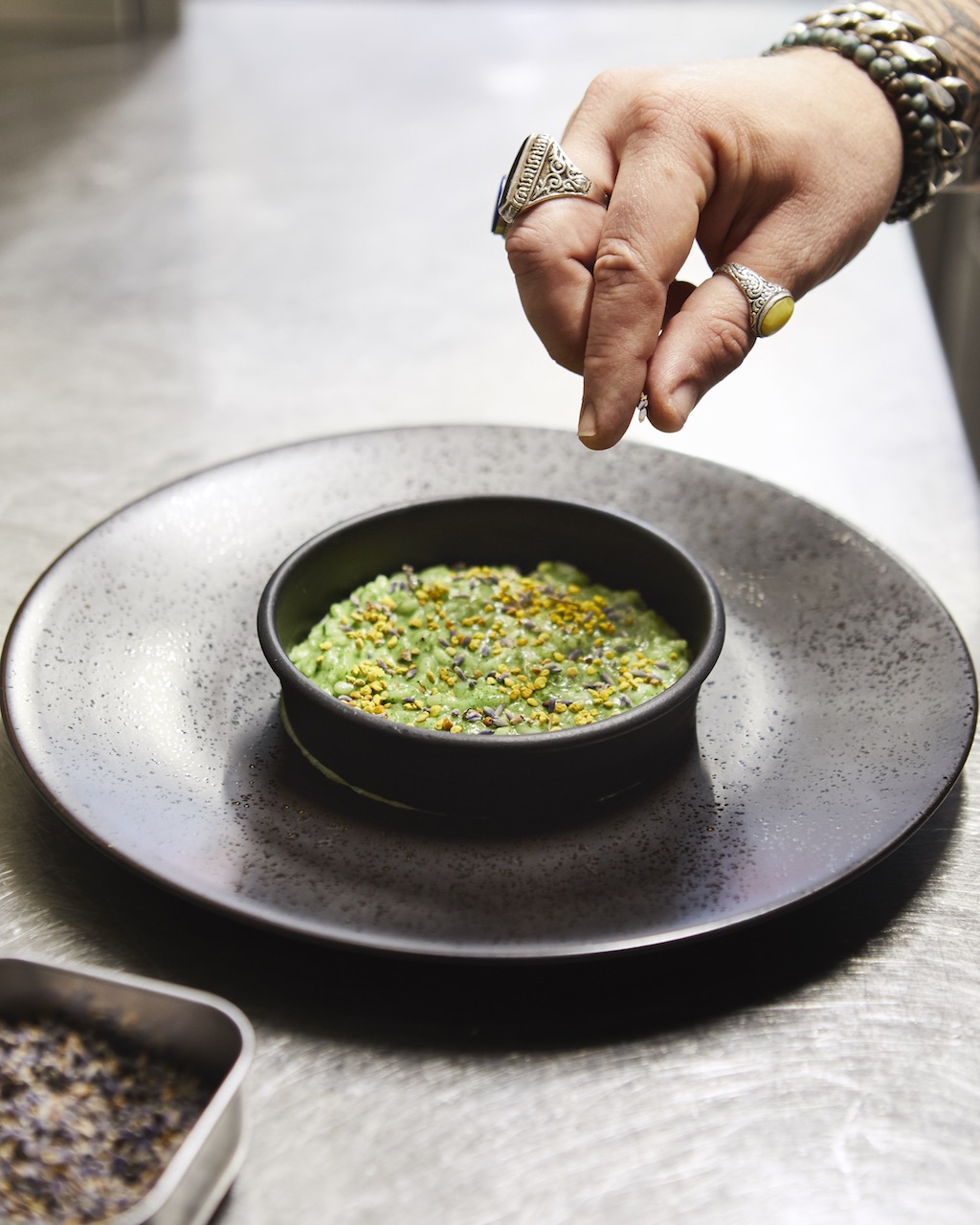
In keeping with the theme, the menu at bu:r is intensely personal. Boer draws on his memories to create dishes like Sunset in Provence – a creamy risotto infused with nettle and speckled with lavender buds, which lend a floral note to the dish. “For me, it paints a picture of my travels with my father,” Boer shares. Desserts include Sicily, which pays homage to the seven years he spent on the southern Italian island. Here, a tart lemon granita (a semi-frozen dessert made from sugar and water) sits on a bed of crumbled chocolate, coffee, capers, pistachios and almonds, creating a medley of summery flavours that evoke an afternoon on the beach.
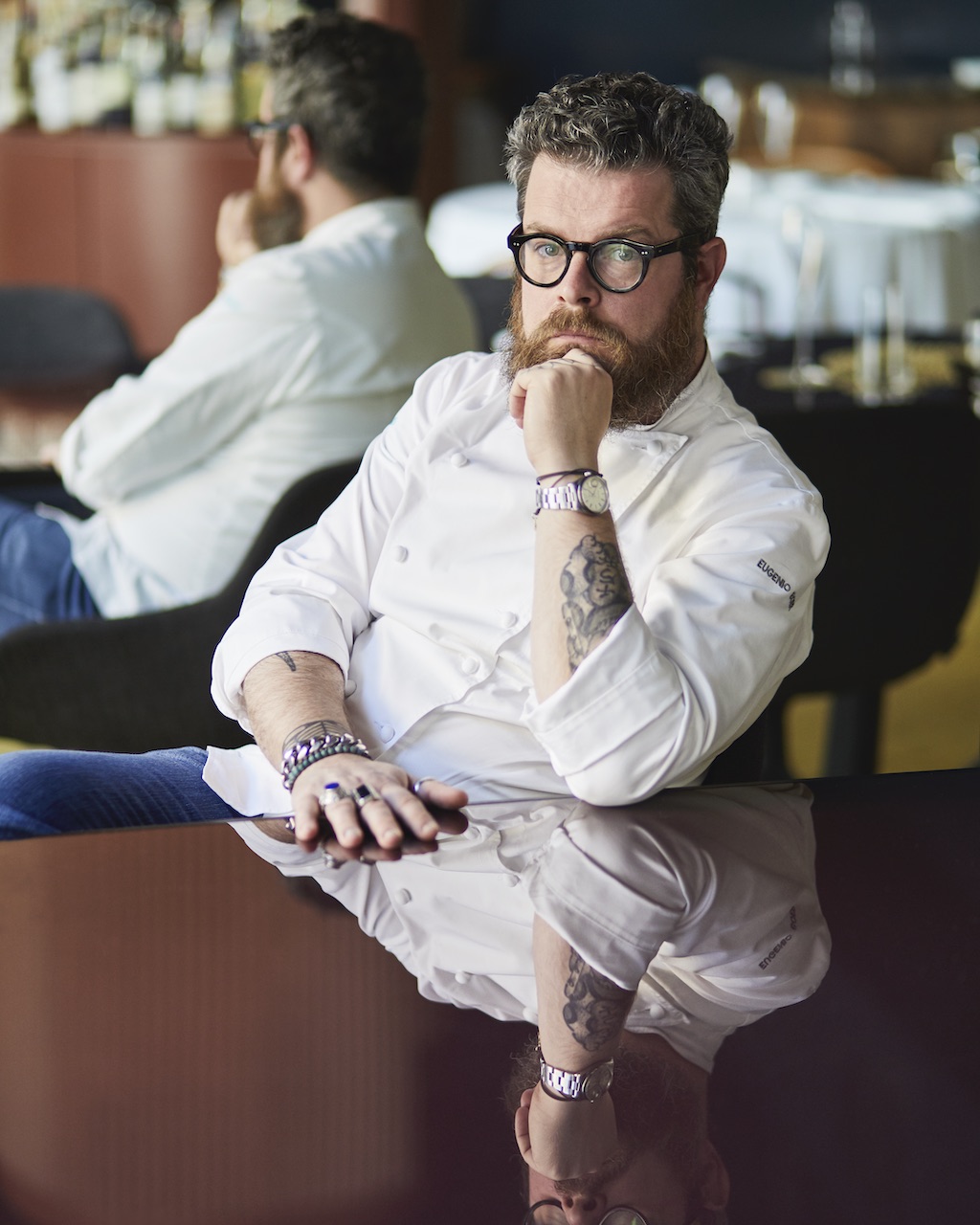
At bu:r, food and décor combine to weave a truly compelling experience. In a city flooded with generic cafés catering to tourists, it is this experience-making that makes its beautiful new restaurants so special and is perhaps a sign of things to come. Boer is certainly optimistic: “Unlike places such as Rome, which has a very traditional approach to food, Milan is more cosmopolitan and open-minded,” he muses. “Over the last few years, I’ve seen a lot of new and different restaurant concepts open up in the city. I think that these may just herald a new culinary epoch in Milan.”
Singapore Airlines flies to Milan daily. To book a flight, visit singaporeair.com
SEE ALSO: 5 local spots worth visiting in Milan
This article was originally published in the July 2019 issue of SilverKris magazine
The post The rising gastronomy sensation taking hold in Milan appeared first on SilverKris.
from SilverKris
No comments:
Post a Comment